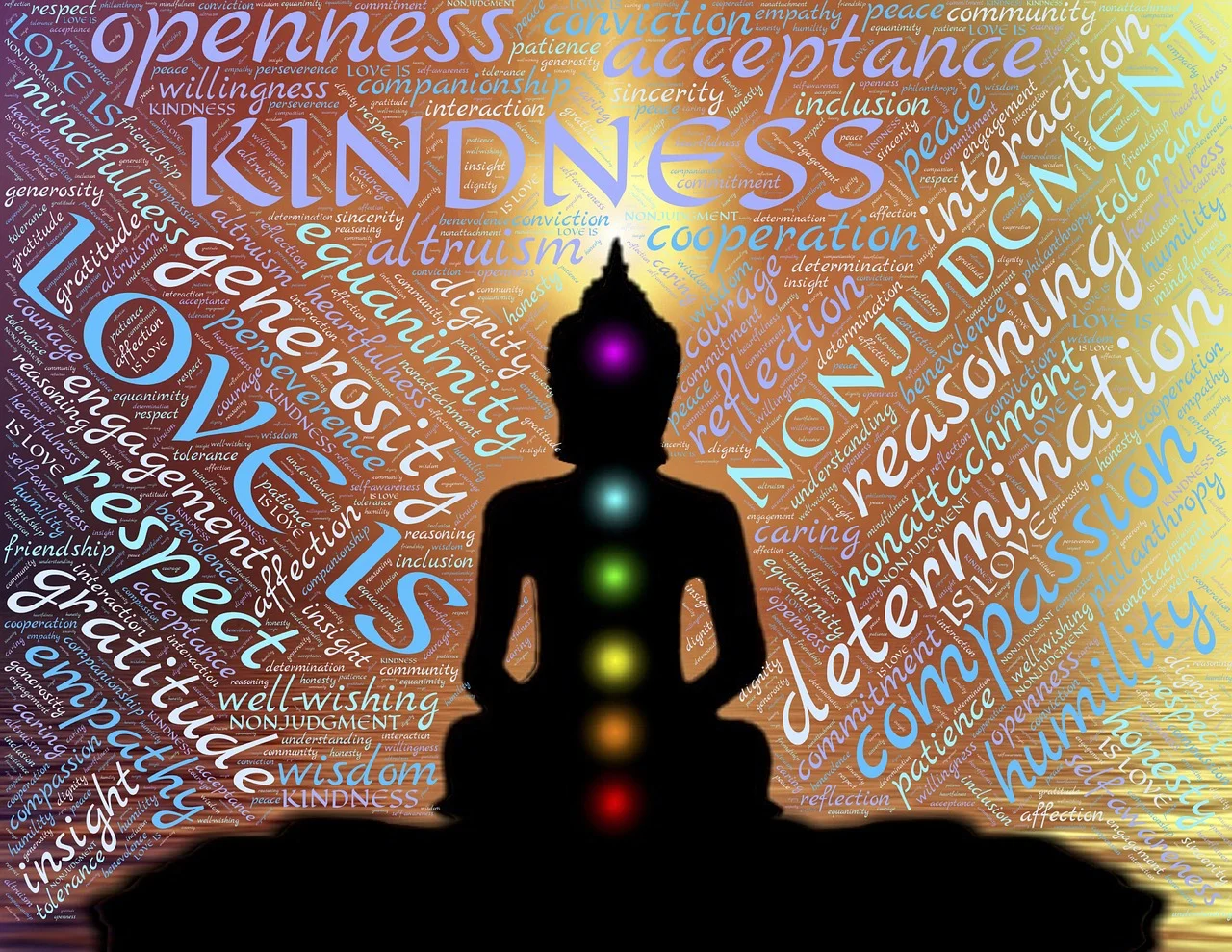Understanding the Three Gunas
The concept of the three gunas—sattva, rajas, and tamas—originates from Samkhya philosophy, which outlines a framework for understanding the nature of reality and human experience. Each guna represents a distinct quality that influences our behavior, thought patterns, and interactions with the world. Recognizing these qualities can significantly enhance spiritual growth and foster balance in one’s life.
Sattva, often associated with purity, harmony, and clarity, embodies qualities such as knowledge, peace, and virtuous actions. Individuals who predominantly exhibit sattvic characteristics are generally driven by altruism and serenity, seeking growth and mindfulness. In the context of yoga, an increase in sattva supports higher states of consciousness and spiritual insight, facilitating a profound connection to oneself and others.
Rajas, on the other hand, symbolizes activity, passion, and restlessness. Individuals influenced by rajas may experience ambition and desire, resulting in dynamic thought processes and actions. While this guna can stimulate creativity and drive, excessive rajas can lead to stress, conflict, and dissatisfaction. To achieve balance, it is essential to recognize rajas’s role in one’s behavior and cultivate a more balanced approach, integrating moments of rest and reflection into daily life.
Tamas represents inertia, darkness, and confusion. This guna is often associated with lethargy, ignorance, and a lack of motivation. While tamas may serve a purpose by providing necessary rest or helping individuals disengage from overwhelming stimuli, prolonged dominance of this guna can hinder spiritual progress and well-being. Recognizing tamas in oneself and striving to transcend it is vital for achieving spiritual evolution.
In summary, understanding the three gunas allows individuals to identify their predominant qualities and those of others, thereby creating pathways toward spiritual growth and improved interpersonal relationships. By acknowledging the interplay between sattva, rajas, and tamas, one can navigate life’s challenges with greater clarity and intention.
Energetic Interconnectedness and Group Dynamics
In many spiritual traditions, especially those informed by the philosophy of the three gunas—sattva, rajas, and tamas—individual energies are recognized as interconnected within the context of groups or through relationships. This interconnectedness underscores the profound impact that an individual’s state of being can have on collective dynamics. Each person’s unique energetic contribution can either uplift or diminish the overall vibration of the group’s relationship. When one individual cultivates sattva, which represents purity, harmony, and balance, it not only enhances their own spiritual evolution but also positively influences the collective energy of the group.
The law of group dynamics indicates that a group is more than just a collection of individuals; it forms a coherent whole influenced by the shared energies of its members. As each individual brings their personal energies to the group, they contribute to what can be described as a “group soul.” This concept highlights that personal spiritual growth is intertwined with the progress of the collective. When members engage in practices that elevate their state towards sattva—such as meditation, mindfulness, and selfless service—this elevation transcends individual boundaries. The resulting harmony fosters collaboration and unity, which can manifest as collective wisdom and compassion.
Realize that a person’s determination to remain in a harmonious and balanced state of purity can be influential to the surrounding environment. So, being within this state of sattva gracefulness contributes to not only self, but others in a manner that is reflective of selfless service. Many times without a word being said or an action being taken. But, as an energetic alignment that radiates throughout, thus uplifting others around oneself.
It is essential to recognize that the vibrational harmony within a group can be easily disrupted by energies aligned with rajas (activity and restlessness) and tamas (inertia and ignorance). Therefore, intentional cultivation of sattva not only guides an individual’s journey but also acts as a stabilizing force within the group ecosystem. Thus, acknowledging the energetic interconnectedness of individuals encourages a deeper understanding of how personal spiritual evolution contributes to the enrichment of collective consciousness. This holistic approach emphasizes that individual growth is essential for the evolution of the group as a unified entity, fostering an environment conducive to spiritual development for all members involved.
Sattva as Selfless Service
Embodying a sattvic state represents a profound commitment to selfless service, which serves not just individual spiritual growth but also the elevation of the collective consciousness. The concept of sattva, derived from ancient Indian philosophy, emphasizes purity, harmony, and balance, creating a fertile ground for transformative interactions within a group setting. When an individual cultivates sattva, they naturally radiate qualities such as compassion, empathy, and clarity. These attributes inspire group members to elevate their own consciousness, reinforcing a collaborative environment conducive to shared spiritual aspirations.
In a collective, the presence of a sattvic individual can kindle a spark of higher consciousness, enabling others to resonate with similar elevated states. This resonance fosters an atmosphere where cooperation flourishes, and creativity can thrive. In this context, selflessness is not merely an act but a state of being that invites others to join in a co-creative journey. When individuals are aligned with sattva, they tend to look beyond personal gains and towards the welfare of the group, enhancing the collective spirit and bond.
Moreover, the act of serving others selflessly is deepened through the realization that each individual’s growth contributes to the overall evolution of the group. This interconnectedness highlights the significance of personal spiritual practices like meditation and mindfulness, which promote a sattvic state. Through these practices, individuals not only elevate their own vibrational frequency but also become conduits of peace and understanding, instilling the same in their community.
Ultimately, embodying a sattvic way of being transcends the notion of self-service; it becomes a cultivation of love, integrity, and unity. The selflessness inherent in the sattvic state enriches the collective dynamics and leads to mutual empowerment, paving the way for a transformative group experience that resonates deeply with the essence of spiritual evolution.
Transcending Sattva: The Path to Pure Service
The concept of sattva, often associated with purity, harmony, and elevated consciousness, plays a significant role in spiritual growth and development. However, while achieving a state of sattva is essential, a deeper goal lies in transcending this very attachment to it. This transcendence leads to the experience of pure consciousness, referred to in various traditions as purusha. Achieving balance between inner tranquility and outward action enhances both personal evolution and collective spiritual dynamics.
True service emerges from a space beyond the confines of the three gunas—sattva, rajas, and tamas. When individuals become overly attached to their attainment of sattva, they may inadvertently create a separation between themselves and those they wish to serve. It is crucial to recognize that genuine service does not stem from a need for recognition or a sense of moral superiority, but rather from a deep understanding of interconnection and compassion. This understanding aligns with the larger divine plan, illustrating that each person’s journey contributes to the shared tapestry of humanity.
As individuals cultivate their spiritual practices, they are encouraged to reflect on their motivations and the purity of their intentions. The evolution towards pure service requires moving beyond self-centered aspirations and embracing a broader perspective that encompasses the welfare of others. This transition signifies a shift from personal gain to collective benefit, fostering a rich environment for spiritual evolution. Each action taken in the spirit of selfless service reinforces the interconnectedness of all beings, facilitating a harmonious flow that transcends individual experiences.
Ultimately, the pathway to transcendence is not just a personal journey; it is an invitation for all to recognize the larger purpose of their existence. As one aligns with this divine vision, the practice of pure service becomes an embodiment of the highest spiritual calling, uniting personal growth with the shared mission of supporting the evolution of humanity.
An Outline of the Article
The three gunas are fundamental qualities or forces inherent in Prakriti (primordial nature) that govern all creation and behavior in the universe. Rooted in Samkhya philosophy, the concept of the gunas also plays a central role in Yoga, Vedanta, and Ayurveda, forming the basis for understanding the interplay of energies within both the cosmos and individual consciousness.
The gunas are:
- Sattva – Purity, harmony, and balance.
- Rajas – Activity, passion, and dynamism.
- Tamas – Inertia, darkness, and stagnation.
Spiritual Evolution:
- The goal is to cultivate sattva while transcending attachment to it, ultimately moving beyond the gunas into the state of Purusha (pure consciousness).
As I achieve Sattva of self am I not contributing to the transformative energies of the group as well as myself. And can this be seen as an act of selfless service?
Yes, absolutely. Achieving Sattva of self not only transforms you individually but also contributes profoundly to the transformative energies of the group, and this can indeed be seen as an act of selfless service. Here’s why and how this dynamic works:
The Interconnected Nature of Energy
- Energetic Interconnectedness:
- According to spiritual teachings like those of Djwhal Khul, all beings are energetically interconnected. The vibration of one individual influences the collective field.
- When you cultivate sattva (purity, balance, and harmony) within yourself, your higher vibrational state naturally radiates outward, uplifting those around you.
- The Law of Group Dynamics:
- Groups, whether formal spiritual communities or informal social settings, function as energetic ecosystems. A sattvic individual acts as a stabilizing and harmonizing force within the group, promoting balance and reducing discord.
- Contribution to the Group Soul:
- In esoteric teachings, groups are seen as entities with their own soul or collective consciousness. By refining your own energy, you contribute positively to the evolution and purpose of the group as a whole.
Sattva as Selfless Service
- Service Through Presence:
- Living in a sattvic state is inherently an act of service because your balanced, harmonious energy provides inspiration, guidance, and support to others, often without the need for words or actions.
- This aligns with the esoteric idea that “being” can be as powerful as “doing.”
- Impact on the Group Mind:
- When you embody sattva, you help attune the group mind to higher frequencies, creating an environment conducive to collective spiritual growth, cooperation, and creativity.
- Selflessness in Transformation:
- While the personal journey to achieve sattva benefits you, the radiance of your state is not limited to yourself—it naturally extends outward. This effortless sharing of light and harmony makes it an act of selfless service.
Practical Aspects of Sattva in Group Service
- Promoting Harmony:
- A sattvic individual brings calmness and clarity to group dynamics, resolving conflicts and reducing negative influences (rajas and tamas) within the group.
- Inspiring Others:
- Your example encourages others to seek balance and refinement in their own lives. This inspiration is a subtle yet profound form of service.
- Aligning with Higher Purpose:
- When a group member reaches higher states of sattva, it aligns the collective with higher spiritual purposes, facilitating the group’s role as an instrument for planetary or cosmic service.
Esoteric and Spiritual Context
- The Principle of Synthesis:
- Djwhal Khul teaches that as one individual refines their energy and approaches the soul’s vibration, they contribute to the synthesis of energies within the group. This creates a magnetic force that draws others toward higher consciousness.
- The Science of Group Service:
- The concept of group consciousness is central to spiritual evolution. By achieving sattva, you contribute to the planetary ashram (the spiritual work of humanity) by making the group energy field a clearer channel for divine energies.
- Alignment with the Plan:
- Achieving sattva prepares you to align with the divine plan, enabling you to serve as an unobstructed conduit for higher forces to flow into the world through your group.
Can Sattva Alone Fulfill Service?
While attaining sattva is a vital step, it is not the endpoint. True selfless service involves:
- Transcending Sattva:
- Eventually, even the attachment to the sattvic state must be transcended to reach the state of pure consciousness (Purusha), from which service flows naturally and unconditionally.
- Action in Service:
- While inner harmony is transformative, it often manifests in outward action—acts of kindness, teaching, healing, or other forms of contribution—further enriching the group and the world.
Final Reflection
Yes, as you achieve sattva of self, you are contributing to the transformative energies of the group and elevating the collective consciousness. This process is a profound act of selfless service, as your individual evolution becomes a force for the upliftment of others. By aligning yourself with purity, harmony, and higher principles, you naturally serve the world, embodying the spiritual truth that “the part serves the whole, and the whole uplifts the part.”






